
Common Snake Species in Tulsa
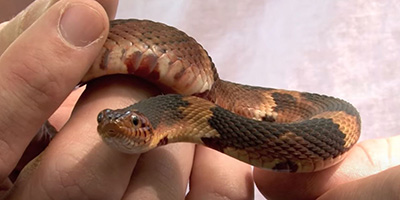 Broad-banded Water Snake:
Broad-banded water snakes typically have dark bands on the top of their bodies that are separated by 3-4 scales, which tend to be of a lighter color. The sides and bottom of its head are commonly yellow or are slightly white-colored. Their bellies are light-colored with belly markings that are somewhat rectangular shaped. The bellies are usually red, tan, or light brown in color. The rectangles on their bellies also sometimes come in different sets, they can come in twos, threes, and even fours. These snakes like to live near aquatic areas such as lakes and rivers in southeastern Oklahoma and can reach even the central-southern parts of the state.
Broad-banded Water Snake:
Broad-banded water snakes typically have dark bands on the top of their bodies that are separated by 3-4 scales, which tend to be of a lighter color. The sides and bottom of its head are commonly yellow or are slightly white-colored. Their bellies are light-colored with belly markings that are somewhat rectangular shaped. The bellies are usually red, tan, or light brown in color. The rectangles on their bellies also sometimes come in different sets, they can come in twos, threes, and even fours. These snakes like to live near aquatic areas such as lakes and rivers in southeastern Oklahoma and can reach even the central-southern parts of the state.
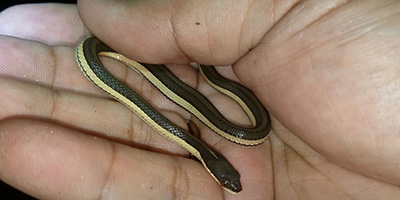 Graham’s Crayfish Snake:
These types of snakes are usually brown to gray in color. They also have cream-colored bellies. Their bellies and back are also separated by the three rows of scales that are a bit lighter than their scales on their backs. These snakes can be found around Central Oklahoma and in the Red River drainage. They like living in lakes, ponds, and any form of water that moves slowly and has a good population of crayfish. As their name suggests, these snakes love to feast on crayfish, their favorite meals are crayfish that have just recently molted. These snakes can also be found in urban areas. These snakes are small and can barely grow longer than 2 feet
Graham’s Crayfish Snake:
These types of snakes are usually brown to gray in color. They also have cream-colored bellies. Their bellies and back are also separated by the three rows of scales that are a bit lighter than their scales on their backs. These snakes can be found around Central Oklahoma and in the Red River drainage. They like living in lakes, ponds, and any form of water that moves slowly and has a good population of crayfish. As their name suggests, these snakes love to feast on crayfish, their favorite meals are crayfish that have just recently molted. These snakes can also be found in urban areas. These snakes are small and can barely grow longer than 2 feet
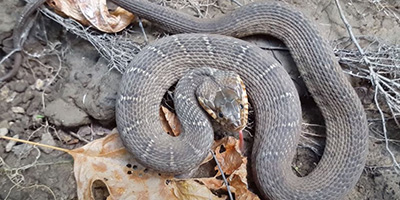 Plain-bellied Water Snake:
Plain-bellied water snakes are usually gray or olive in color. They also have blotches around their bodies that are typically lighter colored. In adults, however, the patterns can sometimes fade away to the point that they can no longer be distinguished. Their bellies are yellow and have no noteworthy markings. These snakes prey on both aquatic and land animals, when they perceive threats they usually resort to biting and releasing a foul smell. What makes this snake unique from other water snakes is that it is willing to leave the water if it means escaping prey or from capture. These snakes like to stay in areas that are near or above water, such as shrubs and tree branches. These snakes can be found in a plethora of places such as the southeastern parts of New Mexico and New Jersey and the northern parts of Michigan and Mexico.
Plain-bellied Water Snake:
Plain-bellied water snakes are usually gray or olive in color. They also have blotches around their bodies that are typically lighter colored. In adults, however, the patterns can sometimes fade away to the point that they can no longer be distinguished. Their bellies are yellow and have no noteworthy markings. These snakes prey on both aquatic and land animals, when they perceive threats they usually resort to biting and releasing a foul smell. What makes this snake unique from other water snakes is that it is willing to leave the water if it means escaping prey or from capture. These snakes like to stay in areas that are near or above water, such as shrubs and tree branches. These snakes can be found in a plethora of places such as the southeastern parts of New Mexico and New Jersey and the northern parts of Michigan and Mexico.
Venomous Snake Species in Tulsa
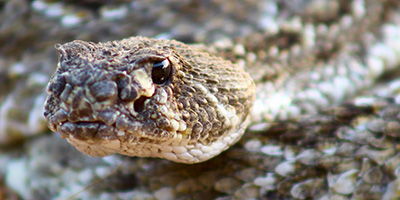 Western Diamondback Rattlesnake:
This type of diamondback rattlesnake is usually tan, brown, or grey in color. It also has a diamond-shaped pattern on its back and is commonly speckled with spots. These are also the most common rattlesnakes in the area. These snakes can be found in flat coastal areas but also can be located in high areas such as canyons and hillsides. They can also be found in deserts, grasslands, and pine-oak forests. These snakes can grow up to 4 feet.
Western Diamondback Rattlesnake:
This type of diamondback rattlesnake is usually tan, brown, or grey in color. It also has a diamond-shaped pattern on its back and is commonly speckled with spots. These are also the most common rattlesnakes in the area. These snakes can be found in flat coastal areas but also can be located in high areas such as canyons and hillsides. They can also be found in deserts, grasslands, and pine-oak forests. These snakes can grow up to 4 feet.
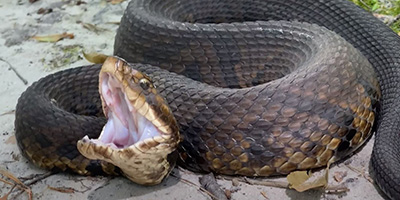 Cottonmouth:
The cottonmouth snake is typically black or dark brown in color. If it is all black it has no patterns on its skin, if it is dark brown it possesses a pattern of darker bands on its backs. Their bellies are also either black or dark brown in color. As young snakes, these snakes tend to have yellow tails. These snakes also have a very interesting diet, which consists of land mammals, birds, amphibians, other snakes, small turtles, and small alligators. Their name “cottonmouth” actually comes from the white lining you can see on their mouths, and when they are threatened they open their mouth wide and present their white lining. These snakes can grow up to 30-42 inches in length.
Cottonmouth:
The cottonmouth snake is typically black or dark brown in color. If it is all black it has no patterns on its skin, if it is dark brown it possesses a pattern of darker bands on its backs. Their bellies are also either black or dark brown in color. As young snakes, these snakes tend to have yellow tails. These snakes also have a very interesting diet, which consists of land mammals, birds, amphibians, other snakes, small turtles, and small alligators. Their name “cottonmouth” actually comes from the white lining you can see on their mouths, and when they are threatened they open their mouth wide and present their white lining. These snakes can grow up to 30-42 inches in length.